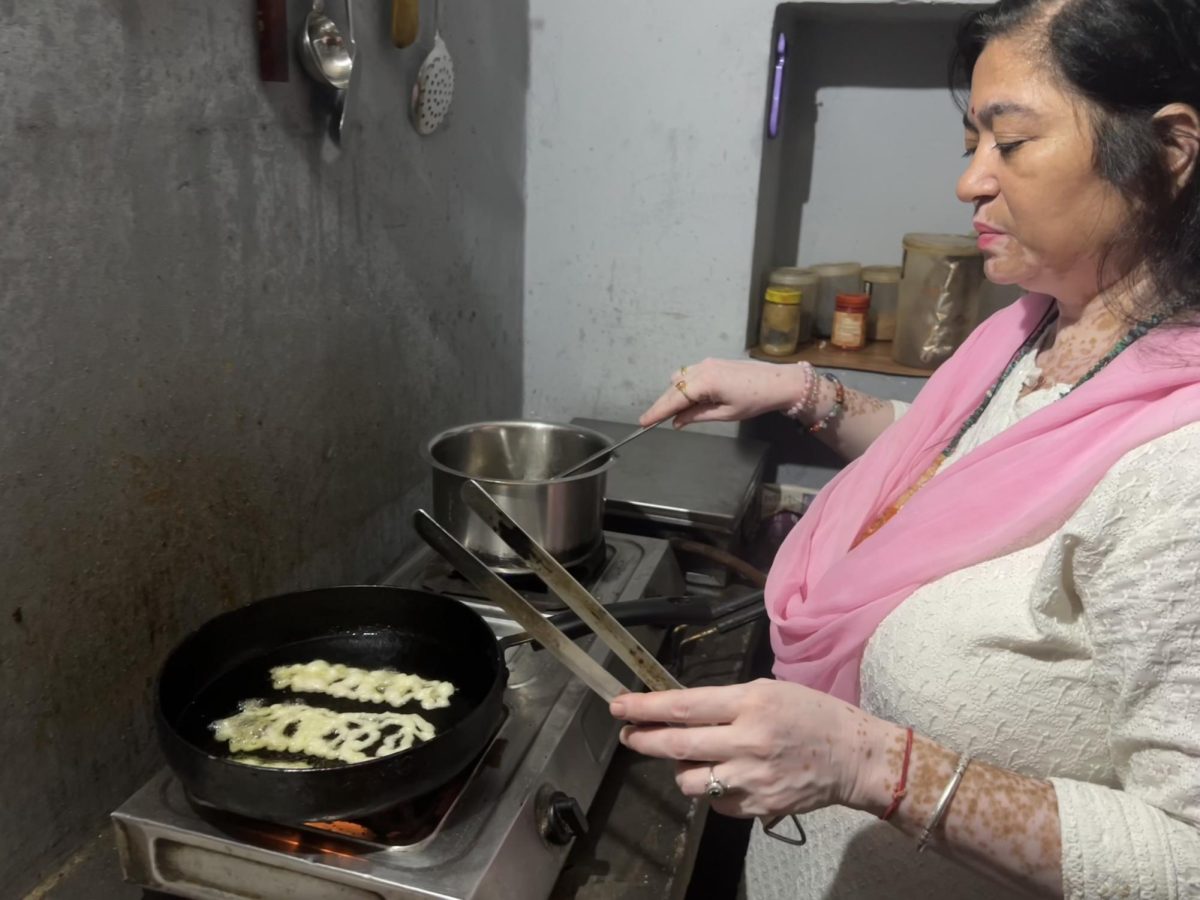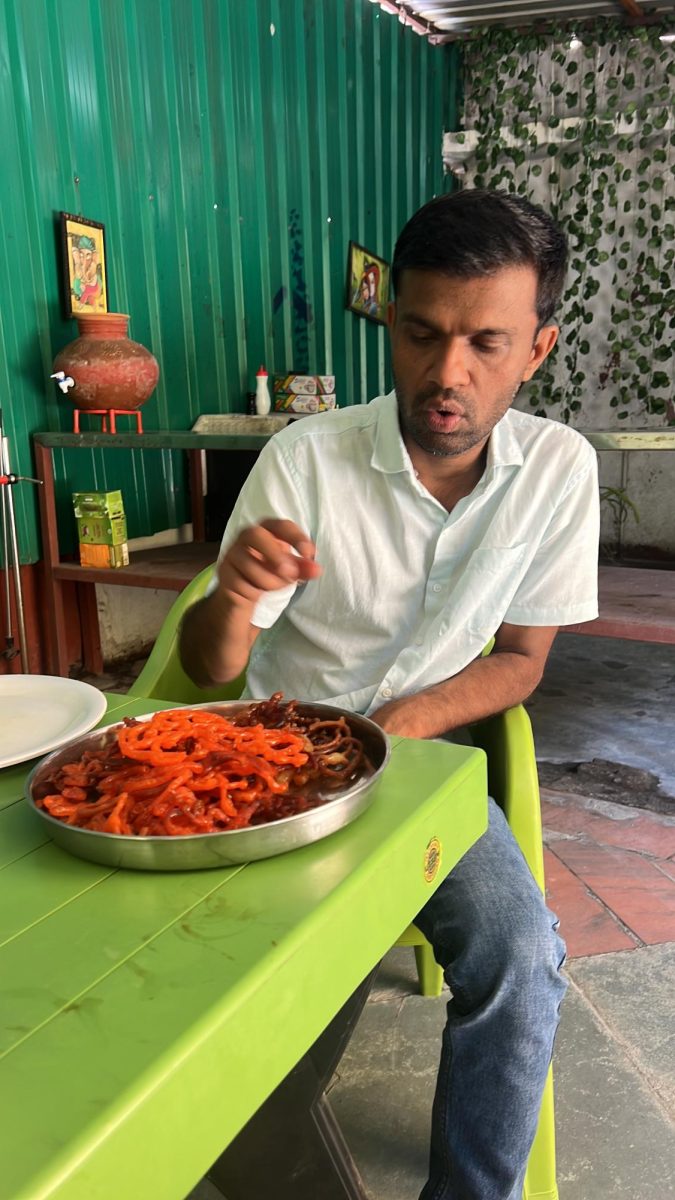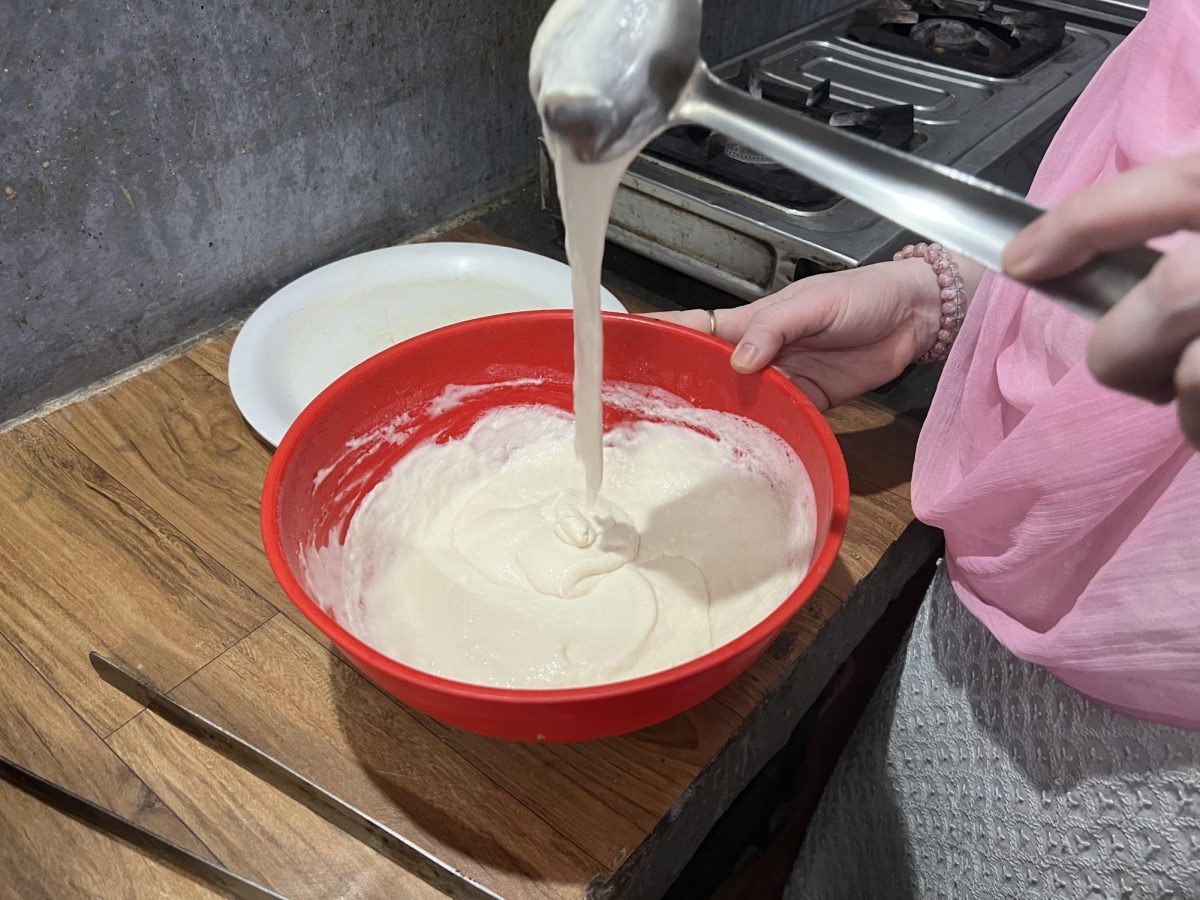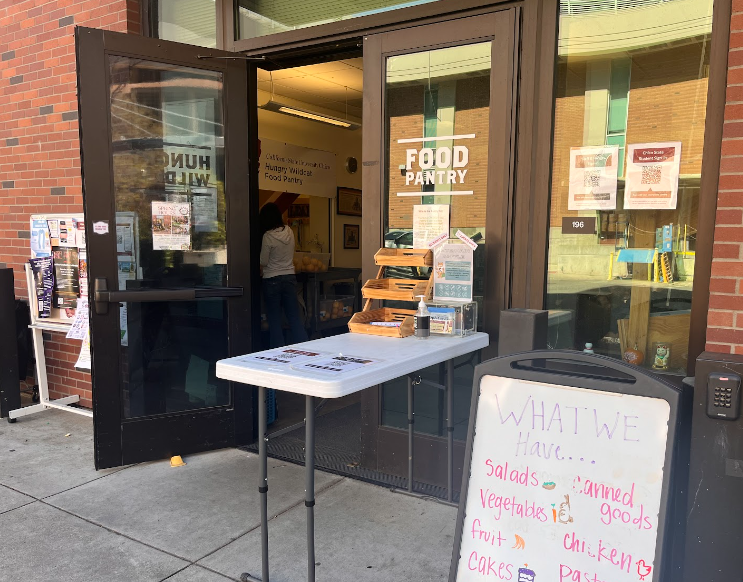Golden, crunchy and oozing with sugary syrup, jalebis is one of the best sweets you will ever taste.
The process involves making a batter and letting it ferment. Then, you fry the batter creating the jalebis, dip it in a sweet cardamom syrup and let it cool before eating.
Jalebis isn’t common in Indian restaurants in America. Gogi, the owner of Gogi’s Cafe in Chico, told me it isn’t well-known enough to sell, and takes a bit of effort.
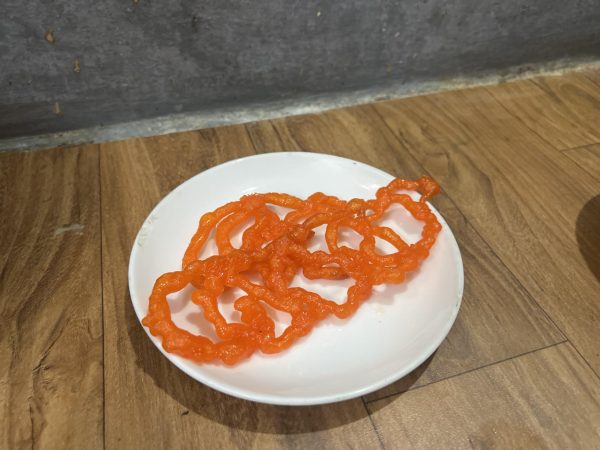
I see what she is saying. Anything fried requires a commitment to dealing with oil: splatter, disposal, safety hazards, etc. But trust me — jalebis is worth it.
It has funnel cake vibes, but much more depth in the flavor. Jalebis is also sticky compared to funnel cakes dry powdery finish.
I fell in love with jalebis while in India this summer. After touring the Hindu temple Swaminarayan Akshardham in Delhi, I stopped at their cafeteria to order the delicacy. The swirly sweet served in a sturdy metal bowl was everything I dreamed it would be.
I caught eyes with a man sitting near me and smiled at him. Solo traveling I was desperate to share this moment with someone. He introduced himself to me as Dr. ____, his name escapes me but I remember his title.
I gushed to him about the fantastic jalebis I had before me. He smiled and agreed that yes, it was a masterpiece of a dessert.
Yoga brought me to India. After Delhi, I traveled north to Rishikesh, a town in the foothills of the Himalayas. There I did a yoga-teacher-training program to become a certified yoga instructor. Catch my classes at the Wildcat Recreation Center Monday at 4:30 p.m. and Friday at 1:30 p.m.
Almost every day in Rishikesh, I walked to a tea stall to buy jalebis during lunch or after dinner. The stall I went to didn’t make it fresh, which is the undeniably superior way to have it. It would sit out uncovered in the open air tea stall and often collect flies, but I did not mind.
In Rishikesh, alcohol and meat are outlawed due to the spiritual nature of the area. If you come to Rishikesh you’re likely coming to study meditation or yoga — or for The Beatles lore, but that’s another story. I struggled greatly with the lack of my vices, and jalebis became my crutch.
Almost every time I ate jalebis I got a stomach ache from over-indulging. But the taste is so addicting and I eat so fast, I was doomed.
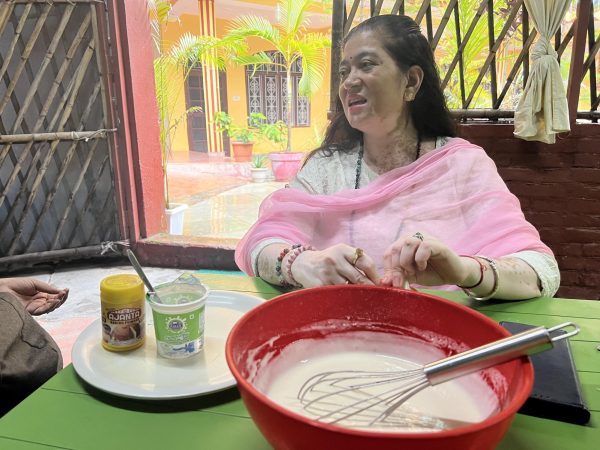
At the yoga academy, I ranted to my teachers and peers about how much I loved jalebis. Arti-ji, the manager of our accommodations and resident healer, generously offered to teach me how to make it.
Below is her recipe and a few tips and tricks.
Another Indian dessert I must recommend is kulfi. I was super excited to try it because Leonard Cohen wrote in his poem “The Best” that “India has the best ice cream.” Surely he was referring to kulfi.
Sofi’z Kitchen and Bar carries pre-packaged kulfi that I have not tried but have my eyes on.
Ingredients
Batter:
1 pound All purpose flour
½ teaspoon Baking powder
¼ teaspoon Baking soda
1 cup whole milk yogurt, stir before adding
Room temp water 1 cup (simply fill yogurt cup if using a single serving yogurt container)
Food coloring or saffron for natural color (both are optional)
Syrup:
1 cup water
2 cups sugar
1 fresh cardamom pod finely ground
To Fry:
2-4 cups vegetable oil
- 1. Make the batter. Mix the flour, baking powder, baking soda, yogurt, water and food coloring together in a large bowl until smooth. The batter should be pourable but not too runny. Think a little bit thinner than cake batter. Add water and flour to adjust consistency. Cover the bowl and let the mixture ferment for four to five hours if the weather is hot. If the weather is cold, let it sit longer, 10-12 hours.
- Make the syrup. Once the batter is close to being ready — it will smell fragrant and a bit sour —, begin the syrup. Ground the cardamom pod using a rolling pin or a jar.
- In a medium saucepan mix the sugar, water and cardamom together and bring to a boil over high heat.
- Once the mixture boils, reduce to a simmer until the syrup registers 223 F on a candy thermometer. Or, you can roll a bit of the mixture between your thumb and index finger until it makes a single string when you pull your fingers apart.
- Turn off the heat and let cool to about 150 F.
- Let’s fry. Add the oil to a frying pan. The oil should be no more than 1 inch deep. You don’t need too much. Heat the oil to about 330 degrees F.
- Pour the batter into a plastic bag, piping bag or squeeze bottle with a ¼ inch tip or smaller. Using a squeeze bottle is ideal because you can set it down in between batches. I used an empty maple syrup bottle when I made this at home and it worked lovely.
- Pipe or squeeze the batter into the oil in swirl shapes about three inches wide for a traditional jalebis shape. You can play around with the shape, but make sure to leave space between the swirls of batter so the edges cook evenly. If the batter is coming out too slowly, cut the tip of the bag or squeeze bottle to slightly widen it.
- Fry the jalebis for about one minute each, turning halfway through. They should look crispy and browned.
- Once fried, remove the jalebis from the oil using tongs and let the excess oil drip back into the pan. Then, transfer the jalebis to the syrup and let soak briefly, no more than 30 seconds. Place them on a rack or a plate to cool for two to three minutes.
- You can serve the jalebis as you continue making them. Fresh and warm is always best. Continue refilling your piping bag or squeeze bottle until all batter is used. Check on the syrup temperature halfway through and reheat if the temperature falls below 150 F.
Molly Myers can be reached at [email protected] or [email protected].









